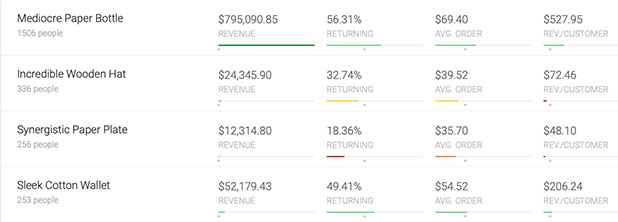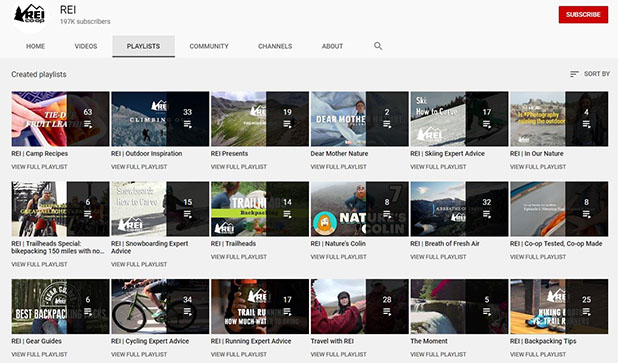D2C brands are definitely the cool kid on the block but how can they grow sustainably and overtake competitors and incumbents? Surely by maintaining a high customer retention rate.
No brand can hope to survive on CPC alone. And everybody does email marketing, abandoned cart recovery and retargeting. You need more than that to dominate your category. You need to be doing something not everyone else is good at. And it’s not just about your products.
High customer retention will allow you to grow and separate yourself from the other brands because repeat customers are a treasure.
Why should D2C brands care about customer retention?
Customer retention increases profitability
As customer acquisition costs increase constantly, returning customers are the best source of recurring revenue at no extra cost. You pay to acquire them once and every subsequent order makes up for this initial investment. Therefore, each new sale comes at a better margin.
CLTV lets you invest in growth
With higher customer retention, customer lifetime value (CLTV) increases, too. This makes your business more financially stable and enables you to invest in new products, new markets, and even new customer acquisition if needed.
D2C brands have a cap on growth
D2C brands are usually niche, catering to a very specific target group. This paired with a traditionally small product range puts some limits on growth.
One way to overcome this challenge is to expand on a global scale, but if you focus on customer retention, victory may be closer to home without huge investments to take your operations to global.
In short, customer retention enables you to grow in revenue without extra acquisition costs, which makes this growth sustainable and profitable.
The advantages of D2C
If you are a D2C company, you have a unique combination of advantages over incumbents and e-commerce resellers. Using them lets you increase your customer retention rate.
- First-party data. You own your distribution channels, track your marketing and can observe customer behavior first-hand. Customer behavior insights are invaluable.
- Close to the target group. Chances are you created your D2C brand out of a need you felt yourself so you know the problem very well as a part of the target group.
- Agile operations. You can act on customer feedback fairly quickly compared to big brands and improve constantly.
- Direct engagement. You are able to communicate with your customers directly over email, social, etc. No intermediaries to pass on your message.
Tactics for increasing customer retention
Everyone knows about loyalty programs and remarketing so these tactics will not give you an edge. The retention tactics we suggest give you the basis of a whole retention strategy.
Analyze current retention status
Use a retention analysis tool to evaluate how you’re currently doing on retention. What is the share of returning customers you have versus the one-timers?
Identify what kind of campaigns, which referrers and products bring in the most loyal customers. Use these findings to optimize your marketing with a focus on retention:
- Feature products that drive loyalty as your front-liners
- Repeat successful campaigns to attract more people who are likely to become loyal customers
- Reuse coupon codes that attract engaged buyers and drop the codes that don’t
- Stop working with influencers and referral sources that bring only one-timers

Cohort analysis shows which products drive loyalty (topmost and bottom)
Act on (all) feedback
Gathering customer feedback is a goldmine of ideas for improvement – new products or variants, language to use in marketing copy, values, direction for expansion. So make sure to thank the positive reviewers appropriately – with a personal discount code, for example.
As for the negative feedback, try to resolve the issue and get back to the customer to let them know about the development. They’ll appreciate it for sure and you might get to keep them as a customer.
Time your emails well
The efficiency of email marketing falls when emails are just blasted at random times. It’s better to study the shopping behavior patterns of your customers and time your emails accordingly.
Cohort analysis and the time between orders metric are helpful tools here. They show you when your customers (segmented into groups by traits, a.k.a. cohorts) place their orders after the first so you know at what intervals they are willing to shop.
If you reach out just before their next expected order date, your email will hit the sweetest spot. Your customers will welcome your emails as naturally coming at the right time instead of intrusive.

Example of buying behavior patterns – customers are most likely to buy every 5 weeks.
Push gently
Not all your customers need to be pushed to reorder all the time, some come back on their own. In order not to be too pushy, it’s best to send replenishment reminders only to those customers who miss the average time between orders mark.
Simply segment your customers by last order placed more than X days (your average time between orders).
Post-purchase content
Content marketing does not stop at conversion. In fact, it’s even more useful for engaging customers post-purchase and keeping them in the loop. People are showered with promotions all the time, but content can set you apart and really keep you top of mind.
D2C brands have so much to talk about, we’re sure you can create engaging content that resonates with your audience. Send tailored newsletters by products bought and interests showed (for example, in a particular sport you cater to).
Just some of the content you can create for your brand:
- Brand story, behind the scenes
- Insider content on materials and make of your products
- Coverage of events, updates on social responsibility projects
- Interviews with partners
- Usage guides, repurpose ideas
- Inspirational content (incl. user-generated)
- Contests
REI, the outdoors brand, not only has an extensive blog on its website but also has a huge YouTube channel with videos on outdoor sports and activities, travel, adventure, sustainable living and more – basically, anything that their audience might be interested in.
They are the go-to source for info, inspiration, and gear.

In conclusion
Customer retention should be your priority if you want to grow your brand sustainably. More repeat buyers mean more stable financial results and less dependence on marketing spend, which gives your D2C brand a breather.
customer retention


Impressive!Thanks for the post